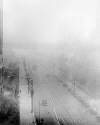Born 26 Jul 1926.
American engineer who, with George Devol, developed the first industrial robot in the United States, the Unimate, in the 1950's. Engelberger is often referred to as the "Father of Robotics." When he and his partner founded Unimation in 1956, the company was the first major manufacturer of industrial robotic arms in the U.S. By 1962, they had installed their first industrial robots at the auto manufacturer, General Motors.«
American engineer who, with George Devol, developed the first industrial robot in the United States, the Unimate, in the 1950's. Engelberger is often referred to as the "Father of Robotics." When he and his partner founded Unimation in 1956, the company was the first major manufacturer of industrial robotic arms in the U.S. By 1962, they had installed their first industrial robots at the auto manufacturer, General Motors.«
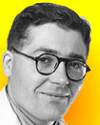
c.1960
Born 26 Jul 1919; died 26 Jul 2022 at age 103. quotes
James Ephraim Lovelock was a British climatologist and inventor who invented (1957) the Electron Capture Detector, a portable analytical instrument able to detect infinitesimal traces of halogenated organic compounds. The device revealed once untraceable amounts in the biosphere, of man-made chemicals such as CFCs or pesticide pollutants. French philosopher Bruno Latour compared that technological advance to the leap when Galileo’s telescope invention could peer deeper into space, revealing so much previously unseen. From the late 1960s, Lovelock championed his Gaia theory. He conceived of the Earth functioning as a planet-sized superorganism—subterranean bacteria to the ice crystals of the stratosphere, working in a gigantic living network.«
James Ephraim Lovelock was a British climatologist and inventor who invented (1957) the Electron Capture Detector, a portable analytical instrument able to detect infinitesimal traces of halogenated organic compounds. The device revealed once untraceable amounts in the biosphere, of man-made chemicals such as CFCs or pesticide pollutants. French philosopher Bruno Latour compared that technological advance to the leap when Galileo’s telescope invention could peer deeper into space, revealing so much previously unseen. From the late 1960s, Lovelock championed his Gaia theory. He conceived of the Earth functioning as a planet-sized superorganism—subterranean bacteria to the ice crystals of the stratosphere, working in a gigantic living network.«
Gaia, by James E. Lovelock. - book suggestion.

Born 26 Jul 1916.
John Roy Whinnery is an American electrical engineer known for his work on microwave theory and laser experimentation. He worked on the problem of He-Ne laser modulation, the transmission of laser light for optical communication and photo thermal effects. Later he changed his research field to quantum electronics and opto-electronics. He co-authored the classic textbook, Fields and Waves in Communication Electronics, before he had a doctoral degree while working 6 days a week in microwaves at General Electric during WW II. His current research interest is communications applications of lasers, with emphasis on short-pulse phenomena.
John Roy Whinnery is an American electrical engineer known for his work on microwave theory and laser experimentation. He worked on the problem of He-Ne laser modulation, the transmission of laser light for optical communication and photo thermal effects. Later he changed his research field to quantum electronics and opto-electronics. He co-authored the classic textbook, Fields and Waves in Communication Electronics, before he had a doctoral degree while working 6 days a week in microwaves at General Electric during WW II. His current research interest is communications applications of lasers, with emphasis on short-pulse phenomena.

Born 26 Jul 1887; died 1979.
Major Reuben Leon Kahn was an American immunologist best known for his investigations of blood reactions, while a member of the U.S. Army Medical Service Corps, which led him to develop a procedure that became an efficient test for syphilis (1918). This is now the standard serological test.
Major Reuben Leon Kahn was an American immunologist best known for his investigations of blood reactions, while a member of the U.S. Army Medical Service Corps, which led him to develop a procedure that became an efficient test for syphilis (1918). This is now the standard serological test.
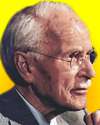
Born 26 Jul 1875; died 6 Jun 1961 at age 85. quotes
Carl Gustav Jung was a Swiss psychiatrist and psychologist who met and collaborated with Sigmund Freud in Vienna in (1907-13), but then developed his own theories, which he called “analytical psychology” to distinguish them from Freud's psychoanalysis or Alfred Adler's individual psychology. Jung proposed and developed the concepts of the extroverted and introverted personality, archetypes, and the collective unconscious. The “father” of psychoanalysis, his work has been influential in psychiatry and in the study of religion. He held chairs at Basel and Zürich.
Carl Gustav Jung was a Swiss psychiatrist and psychologist who met and collaborated with Sigmund Freud in Vienna in (1907-13), but then developed his own theories, which he called “analytical psychology” to distinguish them from Freud's psychoanalysis or Alfred Adler's individual psychology. Jung proposed and developed the concepts of the extroverted and introverted personality, archetypes, and the collective unconscious. The “father” of psychoanalysis, his work has been influential in psychiatry and in the study of religion. He held chairs at Basel and Zürich.
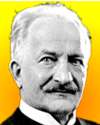
Born 26 Jul 1863; died 24 Jan 1957 at age 93. quotes
Paul Walden was a Latvian chemist who, while teaching at Riga, discovered the Walden inversion, a reversal of stereochemical configuration that occurs in many reactions of covalent compounds (1896). Due to this discovery, Walden's name is mentioned almost in all textbooks on organic chemistry published throughout the world. Walden revealed autoracemization and put the foundations to electrochemistry of nonaqueous solutions. Walden is also known for Walden's rule, which relates the conductivity and viscosity of nonaqueous solutions.[DSB gives birth date 26 Jul 1863. EB gives birth date: New Style 14 Jul 1863 (Old Style 26 July 1863).]
Paul Walden was a Latvian chemist who, while teaching at Riga, discovered the Walden inversion, a reversal of stereochemical configuration that occurs in many reactions of covalent compounds (1896). Due to this discovery, Walden's name is mentioned almost in all textbooks on organic chemistry published throughout the world. Walden revealed autoracemization and put the foundations to electrochemistry of nonaqueous solutions. Walden is also known for Walden's rule, which relates the conductivity and viscosity of nonaqueous solutions.[DSB gives birth date 26 Jul 1863. EB gives birth date: New Style 14 Jul 1863 (Old Style 26 July 1863).]
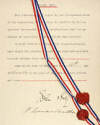
Born 26 Jul 1859; died 18 May 1940 at age 80.
French engineer who was an early advocate of the building of a canal across the Isthmus of Panama and chief organizer of the project. He was instrumental in getting the waterway routed through Panama instead of Nicaragua. He was a leader in the conspiracy that successfully wrested Panama from Colombia. As minister of the new Panamanian republic, he negotiated the Hay-Bunau-Varilla Treaty (18 Nov 1903) that gave the U.S. perpetual use and control of the waterway in the Canal Zone for $10,000,000 and an annual fee of $250,000.Image: Signature page of Hay-Bunau-Varilla Treaty.
French engineer who was an early advocate of the building of a canal across the Isthmus of Panama and chief organizer of the project. He was instrumental in getting the waterway routed through Panama instead of Nicaragua. He was a leader in the conspiracy that successfully wrested Panama from Colombia. As minister of the new Panamanian republic, he negotiated the Hay-Bunau-Varilla Treaty (18 Nov 1903) that gave the U.S. perpetual use and control of the waterway in the Canal Zone for $10,000,000 and an annual fee of $250,000.Image: Signature page of Hay-Bunau-Varilla Treaty.
Path Between The Seas: The Creation of the Panama Canal, by David McCullough. - book suggestion.

Born 26 Jul 1799; died 26 May 1862 at age 62.
American inventor of an alloy (babbitt's metal: tin 89%, antimony 7%, copper 4%.) widely used for friction reducing babbitt bearings. In 1924, he founded a company that has become Reed & Barton, the nation's oldest independent silversmiths. From 1834, he was superintendent of Alger's Foundry and Ordnance Works (South Boston Iron Works), where he cast the first brass cannon made in the U.S. He patented his successful invention of a journal box for train axles 17 Jul 1739, which suggested the bearings alloy.
American inventor of an alloy (babbitt's metal: tin 89%, antimony 7%, copper 4%.) widely used for friction reducing babbitt bearings. In 1924, he founded a company that has become Reed & Barton, the nation's oldest independent silversmiths. From 1834, he was superintendent of Alger's Foundry and Ordnance Works (South Boston Iron Works), where he cast the first brass cannon made in the U.S. He patented his successful invention of a journal box for train axles 17 Jul 1739, which suggested the bearings alloy.

c.1960
Died 26 Jul 2022 at age 103 (born 26 Jul 1919). quotes
James Ephraim Lovelock was a British climatologist and inventor who invented (1957) the Electron Capture Detector, a portable analytical instrument able to detect infinitesimal traces of halogenated organic compounds. The device revealed once untraceable amounts in the biosphere, of man-made chemicals such as CFCs or pesticide pollutants. French philosopher Bruno Latour compared that technological advance to the leap when Galileo’s telescope invention could peer deeper into space, revealing so much previously unseen. From the late 1960s, Lovelock championed his Gaia theory. He conceived of the Earth functioning as a planet-sized superorganism—subterranean bacteria to the ice crystals of the stratosphere, working in a gigantic living network.«
James Ephraim Lovelock was a British climatologist and inventor who invented (1957) the Electron Capture Detector, a portable analytical instrument able to detect infinitesimal traces of halogenated organic compounds. The device revealed once untraceable amounts in the biosphere, of man-made chemicals such as CFCs or pesticide pollutants. French philosopher Bruno Latour compared that technological advance to the leap when Galileo’s telescope invention could peer deeper into space, revealing so much previously unseen. From the late 1960s, Lovelock championed his Gaia theory. He conceived of the Earth functioning as a planet-sized superorganism—subterranean bacteria to the ice crystals of the stratosphere, working in a gigantic living network.«
Gaia, by James E. Lovelock. - book suggestion.
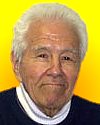
Died 26 Jul 2004 at age 92 (born 21 Oct 1911). quotes
American food scientist who invented Pop Rocks candy, Cool Whip, the orange drink mix Tang, and quick-set Jell-O Gelatin. He developed a tapioca substitute during WW II since tapioca itself was limited in supply. For 35 years, he worked worked as a chemist for General Foods Corp, and held more than 70 patents. Pop Rocks exploding candy was patented in 1956, but not marketed until 1975. Its novelty quickly caught the public's attention. It was an accidental discovery while experimenting to produce an instant soft drink. It is a hard candy manufactured by pressurizing carbon dioxide at 600 psi in a candy syrup at 150 °C. When cooled and solidified it traps small pockets of carbon dioxide that “explode” in a person's mouth.
American food scientist who invented Pop Rocks candy, Cool Whip, the orange drink mix Tang, and quick-set Jell-O Gelatin. He developed a tapioca substitute during WW II since tapioca itself was limited in supply. For 35 years, he worked worked as a chemist for General Foods Corp, and held more than 70 patents. Pop Rocks exploding candy was patented in 1956, but not marketed until 1975. Its novelty quickly caught the public's attention. It was an accidental discovery while experimenting to produce an instant soft drink. It is a hard candy manufactured by pressurizing carbon dioxide at 600 psi in a candy syrup at 150 °C. When cooled and solidified it traps small pockets of carbon dioxide that “explode” in a person's mouth.
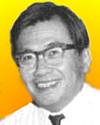
Died 26 Jul 1997 at age 82 (born 16 Mar 1915).
Japanese mathematician who was awarded the Fields Medal in 1954 for his work in algebraic geometry and complex analysis. Kodaira's work includes applications of Hilbert space methods to differential equations which was an important topic in his early work and was largely the result of influence by Weyl. Through the influence of Hodge, he also worked on harmonic integrals and later he applied this work to problem in algebraic geometry. Another important area of Kodaira's work was to apply sheaves to algebraic geometry. In around 1960 he became involved in the classification of compact, complex analytic spaces. One of the themes running through much of his work is the Riemann-Roch theorem. He won the 1985 Wolf Prize.
Japanese mathematician who was awarded the Fields Medal in 1954 for his work in algebraic geometry and complex analysis. Kodaira's work includes applications of Hilbert space methods to differential equations which was an important topic in his early work and was largely the result of influence by Weyl. Through the influence of Hodge, he also worked on harmonic integrals and later he applied this work to problem in algebraic geometry. Another important area of Kodaira's work was to apply sheaves to algebraic geometry. In around 1960 he became involved in the classification of compact, complex analytic spaces. One of the themes running through much of his work is the Riemann-Roch theorem. He won the 1985 Wolf Prize.
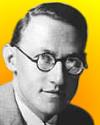
Died 26 Jul 1977 at age 75 (born 24 Jan 1902).
German-American economist and mathematician who popularized “game theory” which mathematically analyzes behaviour of man or animals in terms of strategies to maximize gains and minimize losses. He coauthored Theory of Games and Economic Behavior (1944), with John von Neumann, which extended Neumann's 1928 theory of games of strategy to competitive business situations. They suggested that often in a business situation (“game”), the outcome depends on several parties (“players”), each estimating what all of the others will do before determining their own strategy. Morgenstern was a professor at Vienna University, Austria, from 1931 until the Nazi occupation in 1938), when he fled to America and joined the faculty at Princeton University. His later publications included works on economic prediction and aspects of U.S. defence.«
German-American economist and mathematician who popularized “game theory” which mathematically analyzes behaviour of man or animals in terms of strategies to maximize gains and minimize losses. He coauthored Theory of Games and Economic Behavior (1944), with John von Neumann, which extended Neumann's 1928 theory of games of strategy to competitive business situations. They suggested that often in a business situation (“game”), the outcome depends on several parties (“players”), each estimating what all of the others will do before determining their own strategy. Morgenstern was a professor at Vienna University, Austria, from 1931 until the Nazi occupation in 1938), when he fled to America and joined the faculty at Princeton University. His later publications included works on economic prediction and aspects of U.S. defence.«
Theory of Games and Economic Behavior, by John von Neumann and Oskar Morgenstern. - book suggestion.
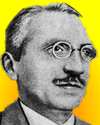
Died 26 Jul 1941 at age 66 (born 28 Jun 1875). quotes
French mathematician who developed a theory of integration, now known by his name. By extending the work of Camille Jordan and Émile Borel on the Riemann integral, Lebesgue provided a generalization that solved many of the difficulties in using Riemann’s theory of integration. Lebesque provided a foundation for subsequent development of integration theory and its further application in calculus, curve rectification and theory of trigonometric theory. He also contributed in several fields of mathematics, including set theory, calculus of variation and function theory.
French mathematician who developed a theory of integration, now known by his name. By extending the work of Camille Jordan and Émile Borel on the Riemann integral, Lebesgue provided a generalization that solved many of the difficulties in using Riemann’s theory of integration. Lebesque provided a foundation for subsequent development of integration theory and its further application in calculus, curve rectification and theory of trigonometric theory. He also contributed in several fields of mathematics, including set theory, calculus of variation and function theory.
Measure and the Integral, by Henri Léon Lebesgue. - book suggestion.
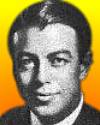
Died 26 Jul 1941 at age 44 (born 24 Apr 1897). quotes
Benjamin Lee Whorf was an American anthropologist and linguist, who originally trained as a chemical engineer (1918), and began work as a fire prevention engineer. As an avocation, he pursued anthropology and studied native American languages. He became well known for his study of the Hopi language. With Sapir, he developed the Sapir-Whorf hypothesis concerning the way that language affects thought. This theory proposed that the language a person speaks (independent of the culture in which he or she resides) affects the way that he or she thinks, meaning that the structure of the language itself affects cognition. His studies, though not all were proven, helped future linguists in their studies. He died at only 44 years old, due to cancer.«
Benjamin Lee Whorf was an American anthropologist and linguist, who originally trained as a chemical engineer (1918), and began work as a fire prevention engineer. As an avocation, he pursued anthropology and studied native American languages. He became well known for his study of the Hopi language. With Sapir, he developed the Sapir-Whorf hypothesis concerning the way that language affects thought. This theory proposed that the language a person speaks (independent of the culture in which he or she resides) affects the way that he or she thinks, meaning that the structure of the language itself affects cognition. His studies, though not all were proven, helped future linguists in their studies. He died at only 44 years old, due to cancer.«
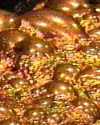
Died 26 Jul 1932 at age 67 (born 9 Nov 1864).
British technologist who, with his brother Alexander Stanley Elmore, jointly developed floatation processes to separate valuable ore, such as copper, from the gangue (worthless rock) with which it is associated when mined. In 1898, they obtained a patent for the first practical equipment (British patent No. 21,948). Pulverized ore is mixed with water and brought into contact with thick oil. The oil entraps the metallic constituents, which are afterwards separated, and gangue passed away with the water. They installed their equipment at mines in north Wales, northern England, and at the Broken Hill lead and zinc mines in Australia. Today, floatation methods remain vital in the mining industry, processing millions of tons of ores each year. more
British technologist who, with his brother Alexander Stanley Elmore, jointly developed floatation processes to separate valuable ore, such as copper, from the gangue (worthless rock) with which it is associated when mined. In 1898, they obtained a patent for the first practical equipment (British patent No. 21,948). Pulverized ore is mixed with water and brought into contact with thick oil. The oil entraps the metallic constituents, which are afterwards separated, and gangue passed away with the water. They installed their equipment at mines in north Wales, northern England, and at the Broken Hill lead and zinc mines in Australia. Today, floatation methods remain vital in the mining industry, processing millions of tons of ores each year. more

Died 26 Jul 1925 at age 76 (born 8 Nov 1848). quotes
Friedrich Ludwig Gottlob Frege was a German mathematician and logician who founded modern symbolic logic and was the first to show mathematics as actually an extension of logic. He extended Boole's work by inventing logical symbols (symbols for “or”, “if-then”, etc.) that improved on the syllogistic logic it replaced. He also worked on general questions of philosophical logic and semantics. His theory of meaning, based on makig a distinction between what a linguistic term refers to and what it expresses, is still influential. Frege tried to provide a rigorous foundation for mathematics on the basis of purely logical principles, but abandoned the attempt when Bertrand Russell, on whose work he had a profound influence, pointed out a paradox that made the system inconsistent.
Friedrich Ludwig Gottlob Frege was a German mathematician and logician who founded modern symbolic logic and was the first to show mathematics as actually an extension of logic. He extended Boole's work by inventing logical symbols (symbols for “or”, “if-then”, etc.) that improved on the syllogistic logic it replaced. He also worked on general questions of philosophical logic and semantics. His theory of meaning, based on makig a distinction between what a linguistic term refers to and what it expresses, is still influential. Frege tried to provide a rigorous foundation for mathematics on the basis of purely logical principles, but abandoned the attempt when Bertrand Russell, on whose work he had a profound influence, pointed out a paradox that made the system inconsistent.
The Frege Reader, by Gottlob Frege and Michael Beaney (ed.). - book suggestion.
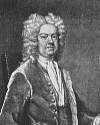
Died 26 Jul 1728 (born 1675).
English physician and politician who was highly esteemed as a scholar, though not one of the great physician. He gave nine chemistry lectures at the Ashmolean Museum, Oxford (1704). He applied Newtonian attraction to estimate forces between particles in chemical processes. He then pursued a medical career and dabbled in politics. Under unjust suspicion of treason, he was imprisoned for a few months in the Tower of London (1722). During this time he planned his History of Physic, about medical treatments. His release was arranged when his friend Richard Mead made that a precondition for treating Sir Robert Walpole, then Prime Minister, for renal calculi. Freind may have suggested the creation of the Christ Church Science Laboratory at Oxford University. In 1727, he became physician to Queen Caroline.«
English physician and politician who was highly esteemed as a scholar, though not one of the great physician. He gave nine chemistry lectures at the Ashmolean Museum, Oxford (1704). He applied Newtonian attraction to estimate forces between particles in chemical processes. He then pursued a medical career and dabbled in politics. Under unjust suspicion of treason, he was imprisoned for a few months in the Tower of London (1722). During this time he planned his History of Physic, about medical treatments. His release was arranged when his friend Richard Mead made that a precondition for treating Sir Robert Walpole, then Prime Minister, for renal calculi. Freind may have suggested the creation of the Christ Church Science Laboratory at Oxford University. In 1727, he became physician to Queen Caroline.«

In 1974, aspartame artificial sweetener was approved by the U.S. Food and Drug Administration. Objections were raised about its safety, and the FDA issued a stay on 5 Dec 1975 after which followed several more years of tests, studies and scrutiny. Finally, it was approved on 22 Oct 1981 for permitted uses that included in candy, tablets, breakfast cereals, instant coffee and tea, gelatines, and chewing gum, among others. Years earlier, in Dec 1965, while working on an ulcer drug, James M. Schlatter had made the discovery that a mixture of two amino acids, aspartic acid and phenylalamine, had a sweet taste. By weight it was about 200 times sweeter than sugar, with very few calories. G.D. Seale marketed it as NutraSweet, a low-calorie artificial sweetener without the bitter aftertaste of saccharin.«
Aspartame: Physiology and Biochemistry, by Lewis D. Stegink and Lloyd J. Filer. - book suggestion.

In 1969, scientists had a first look at the 20.9 kg (46 pounds) of rocks that Apollo 11 astronauts brought back from the moon in SRC's sample return containers. Ten days after the launch of Apollo 11, a “rock box” of samples from the moon’s surface was opened for the first time in the Vacuum Laboratory of the Manned Spacecraft Center's Lunar Receiving Laboratory, bldg 37, at 3:55 p.m.[Image: A close-up view of Apollo 11 lunar sample no.10046. The rock has glass-lined pits and vugs throughout the surface area. Scientists have labeled it a microbreccia, with lithic fragments up to a few millimeters in size. Photographed 08/04/69.]
In 1943, Los Angeles, California, suffered a smog so bad that visibility downdown was limited to three blocks. The noxious smog appeared during a heat wave, causing discomfort to throats and stinging eyes. A butadiene manufacturer was blamed, and temporarily closed, but it became clear it was not the primary source as smog conditions continued. From Oct 1943, the Smoke and Fumes Commission appointed by the city studied the problem. The causes it named were many: locomotive smoke, diesel truck fumes, back-yard rubbish burning plus the mountain topography, stagnant winds and atmospheric temperature inversions. On 14 Oct 1947, the Los Angeles County Air Pollution Control District, the first in the nation, was created. London, England, experienced a killer Great Smog on 5 Dec 1952.«[Image: The first recorded photograph of LA smog, 26 July 1943]
Smogtown: The Lung-Burning History of Pollution in Los Angeles, by Chip Jacobs. - book suggestion.
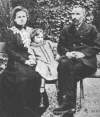
1904
In 1895, Pierre Curie married Marie Sklodowska (Curie) in Sceaux, France. In 1896, Marie Curie decided to investigate Henri Becquerel's discovery of the radiactivity of uranium, as a research topic for her doctoral thesis. Pierre subsequently followed her into research into radioactivity (1898), for which they were later awarded a Nobel Prize. In 1897 she gave birth to a daughter, Irène who later married Frédéric Joliot and became Irène Joliot-Curie (1926). With her husband, she continued the family's work into radioactivity. They, too, received a Nobel Prize (1935).
The Curies: A Biography of the Most Controversial Family in Science, by Denis Brian. - book suggestion.
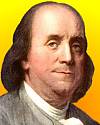
In 1775, Benjamin Franklin was appointed Postmaster-General for the American Colonies. This gave him reason to apply his study of the Gulf Stream, which was why transatlantic sailing ships carrying the mails travelled at different average speeds in opposite directions.
more
Benjamin Franklin: An American Life, by Walter Isaacson. - book suggestion.

